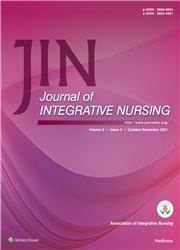Bibliometrics and visual analysis for clinical research on intervention of traditional Chinese medicine nursing technology on rheumatoid arthritis
Q4 Nursing
引用次数: 1
Abstract
Objective: The objective of this study is to explore the current situation, clinical research hot spots, and trends of traditional Chinese medicine (TCM) nursing technology in rheumatoid arthritis (RA), to draw a panorama of clinical research, to provide the basis and clues for subsequent high-level evidence integration and further in-depth research. Materials and Methods: Seven databases including China National Knowledge Infrastructure, Chinese Scientific Journal Database (VIP), Wanfang Database, Chinese Biomedical Literature Database (Sino-Med), PubMed, Embase, and the Cochrane Library were searched. The bibliometric method and visualization software CiteSpace were used to conduct a multi-dimensional analysis of the included literature. Results: A total of 805 pieces of literature were included (of them, one was written in German and four in English), and the number of published literature showed an increasing trend year by year. There were only 30 (3.73%) pieces of literature published in nursing journals. The hot spots of the co-occurrence map were concentrated in: (1) the nursing of fumigation in RA; (2) the efficacy evaluation of TCM nursing technology on pain, joint malformation, and joint dysfunction caused by RA. The included literature themes focused on five TCM technologies: fumigation, moxibustion, acupoint patching, acupoint injection, and Chinese herbal soaking. The beginning year and strength in TCM fumigation were 2012 and 5.2, and those in moxibustion were 2011 and 3.38. Conclusion: The related studies are on the rise. It has entered the field of international readers with clear research hot spots. However, there are still shortcomings such as little literature published in Chinese nursing core journals, few non-Chinese-related documents, and a lack of international exchanges and cooperation. The current research hot spots in this field are TCM fumigation, and the cutting-edge trend of future research may be fumigation and moxibustion technology. It is suggested that further research can focus on evidence integration and original research on the self-optimization of these two techniques.中医药护理技术干预类风湿关节炎临床研究的文献计量学与可视化分析
目的:本研究旨在探讨类风湿关节炎(RA)中医护理技术的现状、临床研究热点及发展趋势,绘制临床研究全景图,为后续高水平证据整合及进一步深入研究提供依据和线索。材料与方法:检索中国国家知识基础设施、中国科学期刊数据库(VIP)、万方数据库、中国生物医学文献数据库(Chinese Biomedical Literature Database (Chinese - med))、PubMed、Embase、Cochrane Library等7个数据库。采用文献计量学方法和可视化软件CiteSpace对纳入的文献进行多维度分析。结果:共纳入文献805篇(其中德文1篇,英文4篇),发表文献数量呈逐年增加趋势。在护理类期刊上发表的文献仅有30篇(3.73%)。共现图的热点集中在:(1)类风湿关节炎的熏蒸护理;(2)中医护理技术对风湿性关节炎所致疼痛、关节畸形、关节功能障碍的疗效评价。纳入的文献主题集中在五种中医技术:熏蒸、艾灸、穴位补片、穴位注射和中药浸泡。中药熏蒸的起始年份和强度分别为2012年和5.2年,艾灸的起始年份和强度分别为2011年和3.38年。结论:相关研究呈上升趋势。已进入国际读者领域,研究热点清晰。但仍存在在中国护理核心期刊上发表的文献较少、非中国相关文献较少、缺乏国际交流与合作等不足。目前该领域的研究热点是中药熏蒸,未来研究的前沿趋势可能是熏蒸艾灸技术。建议今后的研究重点应放在证据整合和两种技术自优化的原创性研究上。
本文章由计算机程序翻译,如有差异,请以英文原文为准。
求助全文
约1分钟内获得全文
求助全文
来源期刊

Journal of Integrative Nursing
Nursing-General Nursing
CiteScore
0.40
自引率
0.00%
发文量
3
审稿时长
17 weeks
 求助内容:
求助内容: 应助结果提醒方式:
应助结果提醒方式:


